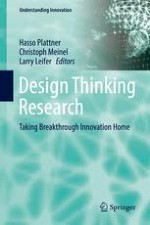2016 | OriginalPaper | Chapter
Embodied Design Improvisation for Autonomous Vehicles
Authors : David Sirkin, Sonia Baltodano, Brian Mok, Dirk Rothenbücher, Nikhil Gowda, Jamy Li, Nikolas Martelaro, David Miller, Srinath Sibi, Wendy Ju
Published in: Design Thinking Research
Publisher: Springer International Publishing
Activate our intelligent search to find suitable subject content or patents.
Select sections of text to find matching patents with Artificial Intelligence. powered by
Select sections of text to find additional relevant content using AI-assisted search. powered by
